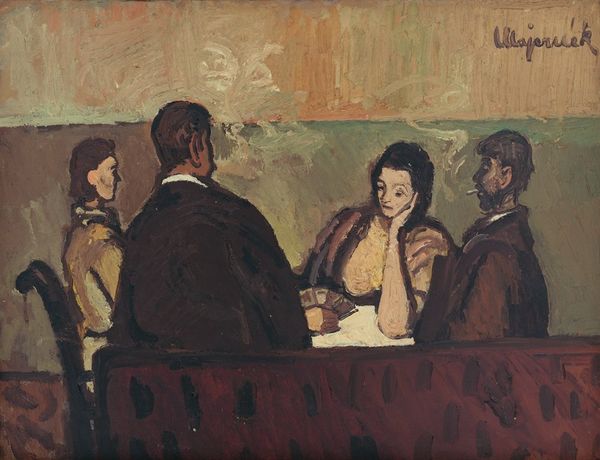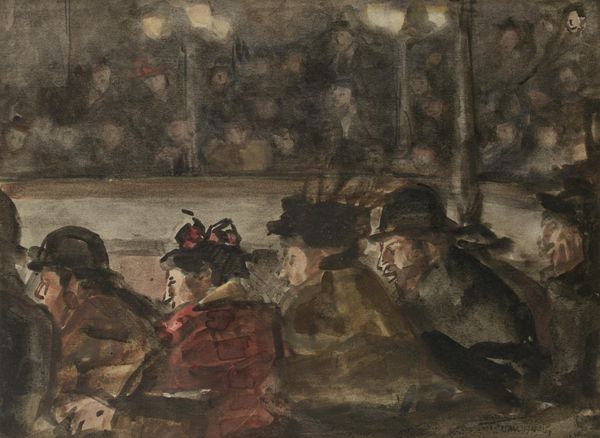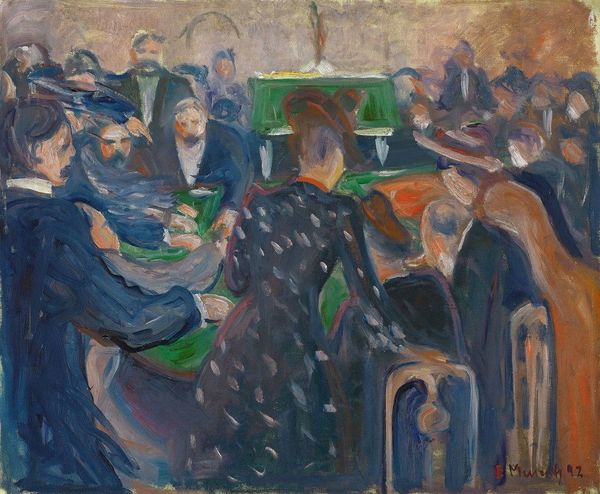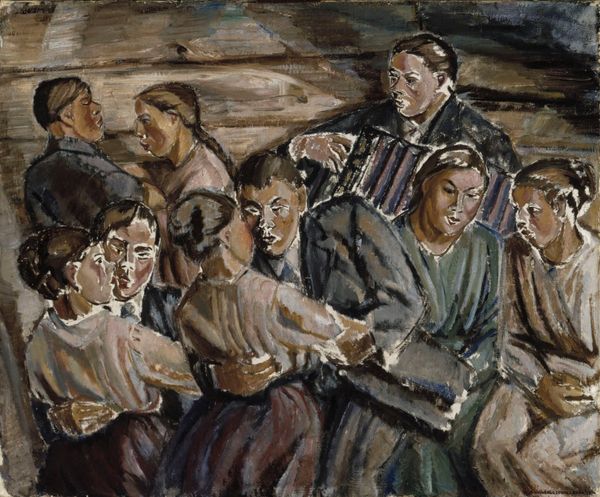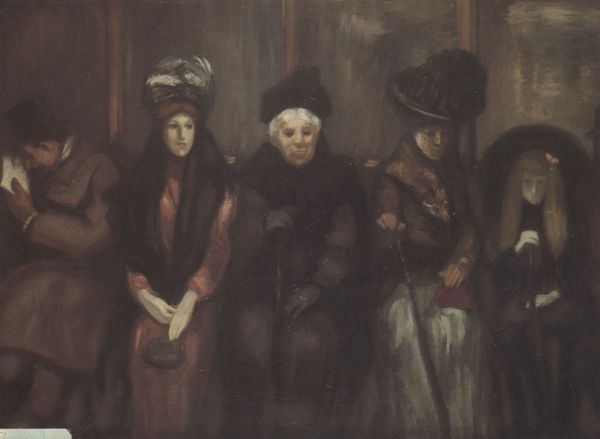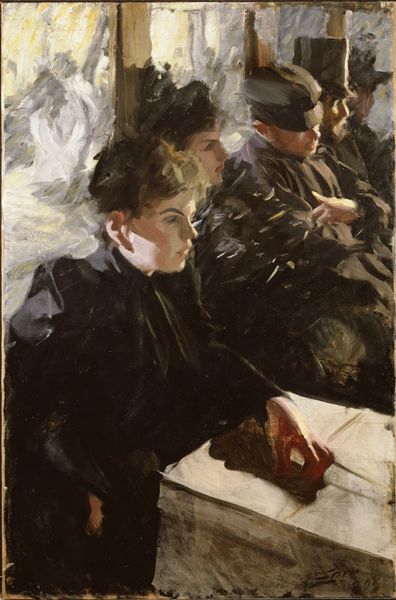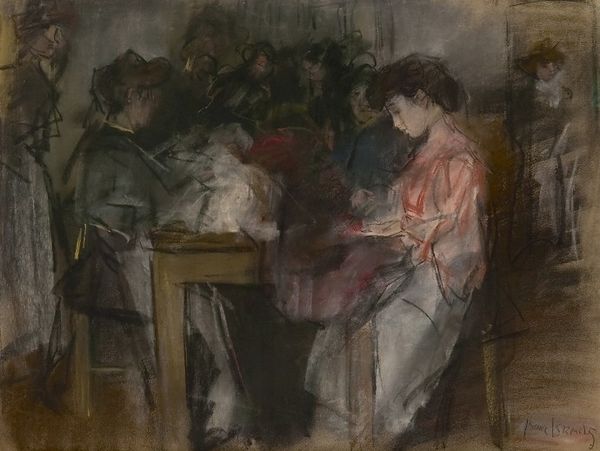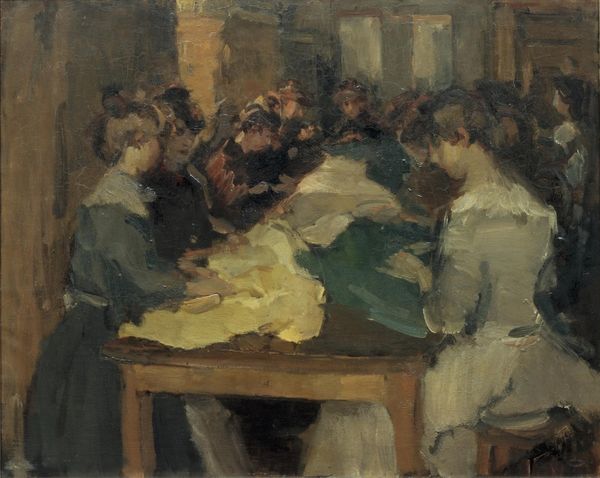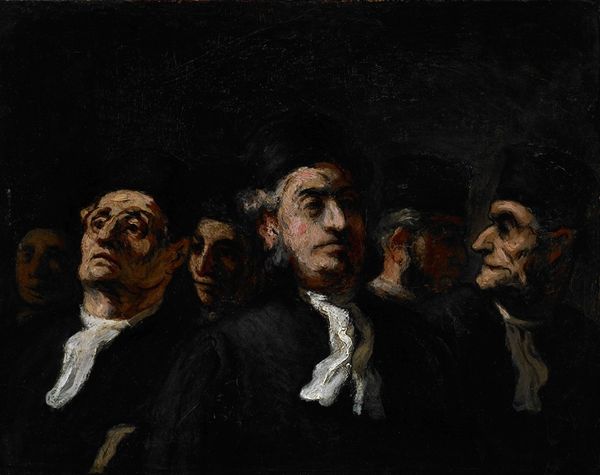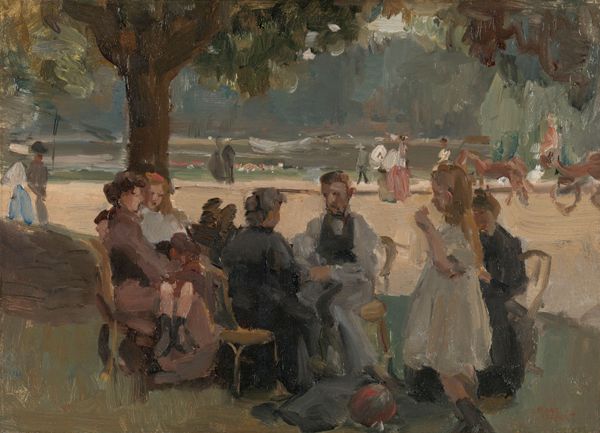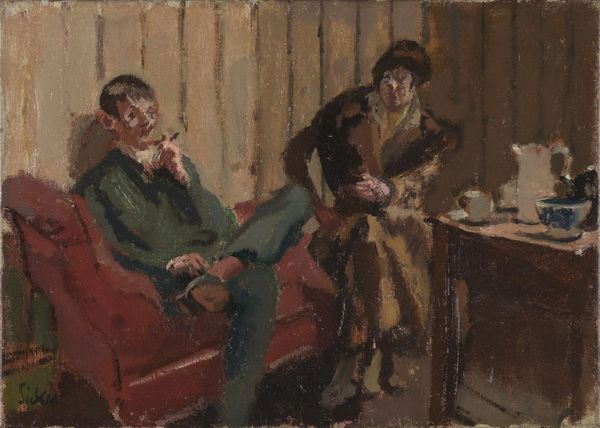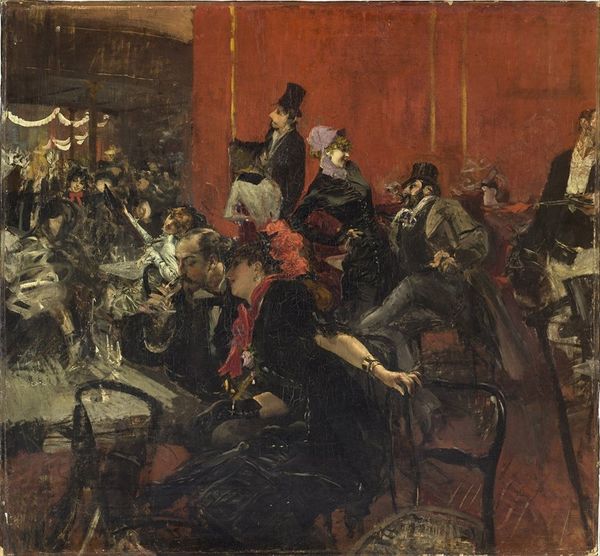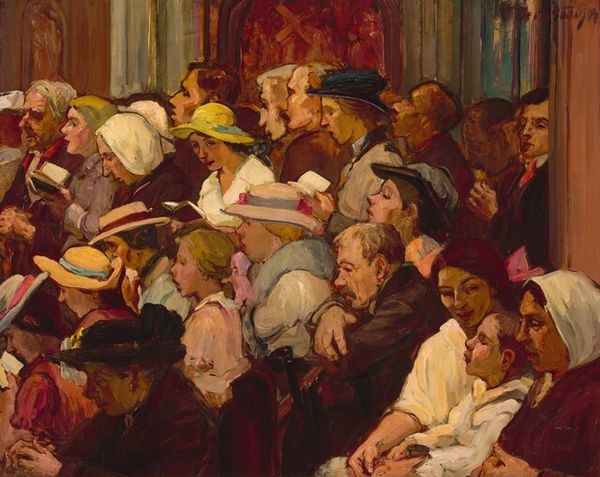
Dimensions: 31.5 cm (height) x 62.5 cm (width) (Netto)
Curator: What strikes me immediately is the solemnity of this scene; everyone seems completely absorbed. Editor: Well, that's certainly captured in "Tilhørere i en landsbykirke," or "Listeners in a Village Church," painted by Christjern Schobius in 1894. He really conveys the feeling of shared experience here. Let's dive into this canvas made with oil paint, shall we? Curator: Absolutely. I find it fascinating how Schobius uses the oil medium here. The visible brushstrokes aren't just about representation; they actively construct the feeling of stillness and shared focus within this small space. You can almost feel the textures of the wooden pews and the heavy fabrics worn by the congregation. It challenges that divide we so often assume exists between the elevated status of art and the humble labor of its making. Editor: Indeed. And the setting itself plays such a crucial role. The village church was often at the heart of rural life. The painting is interesting because it represents how social institutions shaped everyday life and thought during this period, and what that looked like for regular, working people. Curator: Precisely! The somber clothing is fascinating, look, most of them wore a very practical material to the church as a sign of belonging, with very specific clothes representing the rural labor system that shaped this society. Even what seems to be subtle gestures tell us a lot about class, custom and devotion. Editor: And considering the socio-political landscape of late 19th-century Europe, with rising nationalism and social reforms, attending a church service was also a political act, even if subtle. Schobius gives us access to this community and reveals a narrative that is often missing from dominant historical accounts. What this says about the power of an institution at the time cannot be overstated. Curator: Right. You know, analyzing the materials used, like the pigments available and their cost at the time, would reveal another layer of social stratification at play. Even color palettes aren't neutral. Editor: This piece allows us to ask how the artwork reflected broader trends in institutional power, and whether that’s accurately depicting our understanding of power at the time. Curator: Exactly, It goes beyond a mere depiction, offering us a unique perspective. Editor: Indeed. I find I leave with an echo of history’s more nuanced sounds.
Comments
No comments
Be the first to comment and join the conversation on the ultimate creative platform.
